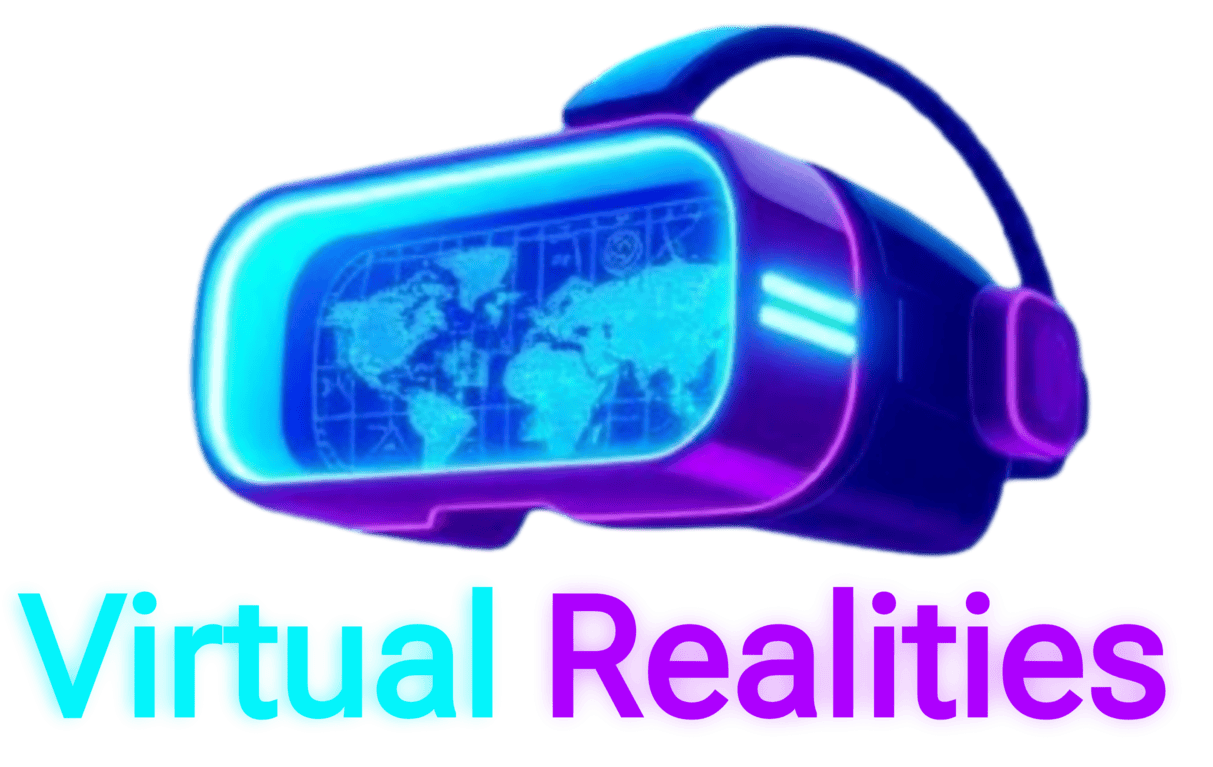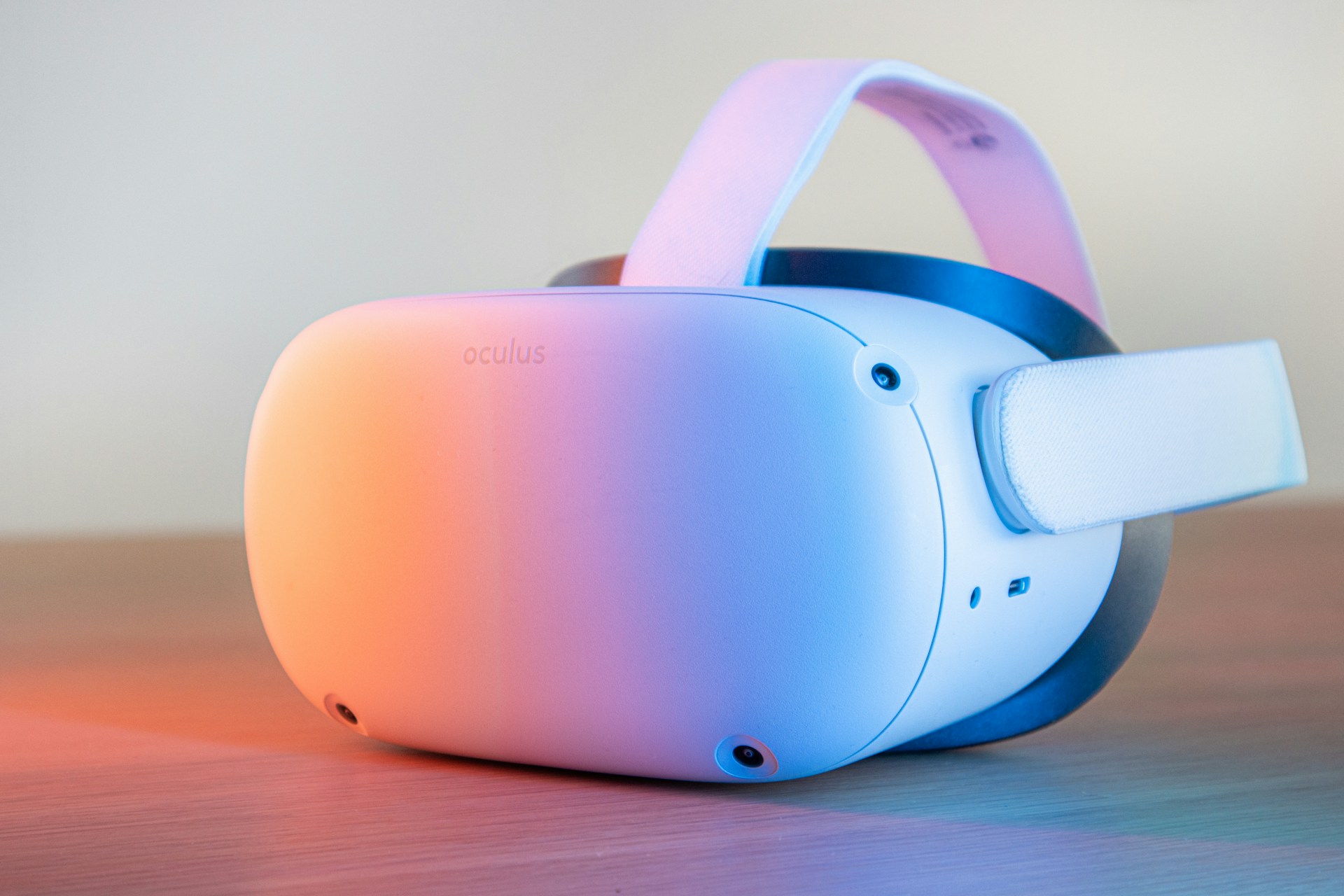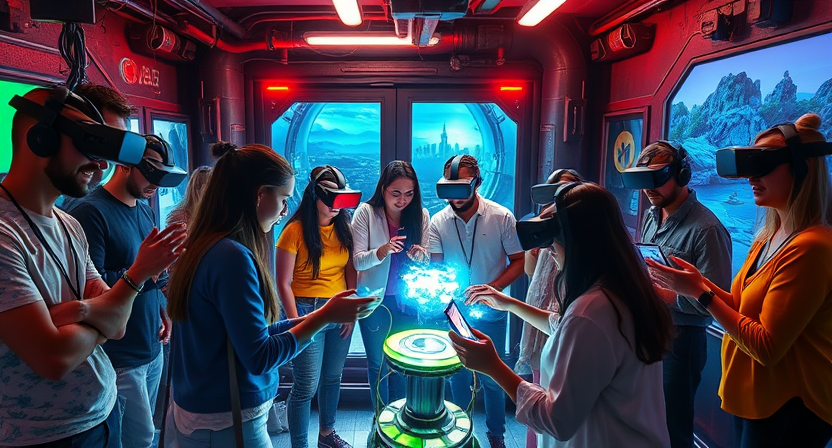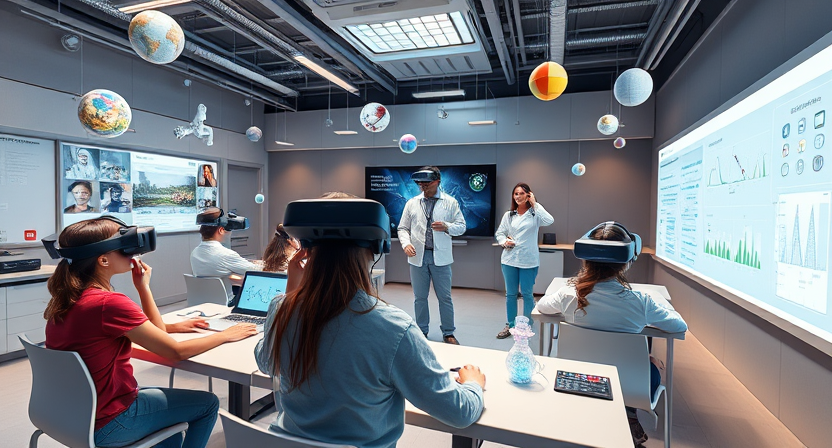Overview of Virtual Reality Technology
Virtual reality (VR) technology has revolutionized the way we experience digital content by immersing users in a three-dimensional, computer-generated environment. By wearing a VR headset and often using hand controllers, individuals can interact with this virtual world as if they were physically present within it. This technology relies on specialized hardware and software to create a realistic sensory experience that can stimulate sight, sound, and even touch, transporting users to diverse and imaginative settings without leaving their physical location.
One of the key components of virtual reality technology is the concept of presence, which refers to the feeling of being fully immersed in the virtual environment. This sense of presence is achieved through the combination of realistic graphics, responsive interactions, and seamless motion tracking. As a result, users often report feeling a strong sense of presence and engagement when using VR, blurring the boundaries between reality and the virtual world.
Evolution of Virtual Reality Technology
Virtual reality (VR) technology has undergone a remarkable evolution since its inception. The roots of virtual reality can be traced back to the 1950s, when Morton Heilig introduced the Sensorama, an immersive theater experience that engaged multiple senses. Subsequent decades saw the development of head-mounted displays and early VR systems, but it wasn’t until the 1990s that VR gained traction in the public domain with the release of consumer-grade devices such as the Virtual Boy by Nintendo.
Advancements in computing power, graphics capabilities, and sensor technology have played pivotal roles in shaping the evolution of VR technology. The early 2000s witnessed a surge in interest in VR with the introduction of headsets like the Oculus Rift and HTC Vive, offering more realistic and immersive experiences. As the technology continues to progress, we are witnessing a convergence of VR with other fields like artificial intelligence, haptics, and augmented reality, propelling the evolution of virtual reality into new frontiers of possibility.
Understanding the Concept of Full-Dive Virtual Reality
Full-dive virtual reality is an advanced form of immersive technology that aims to completely transport users into virtual worlds, providing sensory experiences that closely mimic reality. Unlike traditional virtual reality setups that involve wearing a headset and using hand controllers to interact with the virtual environment, full-dive VR technology aims to engage all the senses, including touch, smell, taste, and even proprioception, to create a truly immersive experience.
In full-dive virtual reality, users are often connected to a central processing unit that directly stimulates their nervous system, enabling them to perceive the virtual world as if it were real. This deep level of immersion can lead to an unparalleled sense of presence and can blur the lines between what is real and what is virtual. As technology continues to evolve, the concept of full-dive virtual reality raises exciting possibilities for entertainment, education, training, and various other applications.
Advantages of Full-Dive Virtual Reality
Full-dive virtual reality offers a truly immersive experience that can transport users to entirely new worlds and scenarios. By fully integrating the user into a virtual environment, this technology enables individuals to interact and engage with their surroundings in a way that feels incredibly real and life-like. This level of immersion can enhance the overall user experience by making interactions more meaningful and memorable.
Moreover, full-dive virtual reality has the potential to revolutionize various industries, including education and training. By simulating realistic scenarios and environments, users can gain practical hands-on experience without any real-world risks. This can be particularly beneficial in fields such as healthcare, where medical professionals can practice complex procedures in a safe and controlled virtual setting before applying their skills in actual clinical settings.
Challenges in Implementing Full-Dive Virtual Reality
One of the primary challenges in implementing full-dive virtual reality is the issue of user safety. Immersing individuals fully into a virtual world can lead to physical risks such as disorientation, dizziness, and even motion sickness. The technology must be carefully calibrated to ensure that users do not experience any adverse effects on their well-being while engaging in a full-dive experience.
Moreover, the affordability of full-dive virtual reality systems remains a significant hurdle in widespread adoption. The cost of creating and maintaining the necessary hardware and software components for a truly immersive virtual reality experience can be prohibitive for many consumers. As such, finding ways to make this technology more accessible and cost-effective without compromising on quality will be crucial for its successful implementation in various sectors.
Impact of Full-Dive Virtual Reality on Society
Full-Dive virtual reality technology has the potential to revolutionize society by offering immersive experiences that blur the lines between the physical and digital worlds. This advanced form of VR could transform the way people interact, communicate, and engage with content, leading to new social norms and behaviors.
As society integrates Full-Dive VR into daily life, there may be a shift in how individuals perceive reality and their relationships with others. The ability to inhabit virtual worlds completely could impact social dynamics, empathy levels, and the concept of personal identity, prompting discussions on the boundaries between real and virtual experiences.
Current Applications of Virtual Reality Technology
Virtual reality technology has seen a surge in diverse applications across various industries. In the field of healthcare, VR is being used for simulation training, surgical planning, and therapy sessions. It allows medical professionals to practice complex procedures in a controlled environment, thereby improving patient outcomes and safety.
In the education sector, VR is transforming the way students learn by providing immersive experiences that enhance understanding and retention of information. From virtual field trips to historical reenactments, educators are leveraging VR to make learning more engaging and interactive. Additionally, VR simulations are being utilized for vocational training, allowing individuals to acquire hands-on experience in a virtual setting.
Neuroscience and Virtual Reality
Understanding the brain’s response to virtual reality experiences has become a focal point in the field of neuroscience. Researchers are delving into how the brain processes virtual stimuli and how this technology can impact cognitive functions. By studying neural activity during virtual reality interactions, scientists aim to enhance our understanding of how the brain perceives and adapts to immersive digital environments.
Neuroscientists are also investigating the potential therapeutic applications of virtual reality in treating mental health disorders and neurological conditions. Virtual reality has shown promise in exposure therapy for phobias, PTSD treatment, pain management, and rehabilitation for a range of motor and cognitive impairments. By leveraging insights from neuroscience, developers are creating tailored virtual reality experiences that cater to specific neural responses, paving the way for innovative interventions in the healthcare sector.
Psychology and Virtual Reality
Virtual reality technology has opened up a new realm for exploration within the field of psychology. Researchers are delving into the psychological effects of immersive virtual environments on individuals’ perceptions, emotions, and behaviors. By creating simulated scenarios that mimic real-life situations, psychologists can study how people react and interact within these artificial settings.
One area of interest is the use of virtual reality exposure therapy for treating phobias and anxiety disorders. By gradually exposing individuals to their fears in a controlled virtual environment, psychologists can help patients confront and manage their anxieties in a safe and supportive setting. This innovative approach has shown promising results in desensitizing individuals to their triggers and empowering them to overcome psychological barriers.
Cognitive Science and Virtual Reality
Cognitive science and Virtual Reality are two interconnected fields that offer a multitude of opportunities for research and development. By studying how the human mind processes information and interacts with technology in virtual environments, researchers can gain valuable insights into enhancing user experiences and improving the effectiveness of VR applications. Cognitive psychology principles play a crucial role in designing virtual environments that are intuitive, engaging, and conducive to learning and problem-solving.
Moreover, cognitive science provides a framework for understanding how individuals perceive, interpret, and react to stimuli in virtual settings. By exploring topics such as attention, memory, decision-making, and problem-solving within the context of Virtual Reality, researchers can optimize immersive experiences and tailor content to individual cognitive strengths and limitations. This interdisciplinary approach leverages cognitive science theories to inform the design and implementation of VR systems that align with human cognitive processes, ultimately enhancing user engagement and facilitating effective learning and behavior change.
Medical Applications of Virtual Reality
Virtual reality technology is not only transforming the entertainment industry but also making significant strides in the field of medicine. From pain management to surgical training, VR is revolutionizing how healthcare professionals approach various medical applications. Through immersive simulations, patients can experience virtual environments that help distract them from discomfort during procedures or treatments.
Moreover, VR is being utilized for mental health interventions, such as exposure therapy for phobias and post-traumatic stress disorder. By creating realistic virtual scenarios, individuals can confront their fears in a controlled environment, leading to desensitization and improved outcomes. The potential of virtual reality in the medical field is immense, offering innovative solutions to enhance patient care and improve treatment efficacy.
Educational Benefits of Virtual Reality
Virtual reality (VR) technology has been increasingly recognized for its numerous educational benefits. By immersing students in interactive and engaging virtual environments, VR has the potential to revolutionize the way students learn and absorb information. Through VR simulations, students can explore complex concepts in subjects such as science, history, and mathematics in a hands-on and experiential manner, fostering deeper understanding and retention of knowledge.
Furthermore, virtual reality can provide unique learning opportunities that are otherwise impossible in traditional classroom settings. For example, students can virtually visit historical landmarks, dive into the depths of the ocean, or even explore outer space, allowing them to experience firsthand what they are learning about in books. This experiential learning not only captures students’ interest and boosts their motivation to learn but also helps them develop critical thinking skills and problem-solving abilities in a multi-sensory and immersive environment.
Ethical Considerations in Virtual Reality Technology
Virtual reality technology raises ethical considerations that must be carefully addressed to ensure the well-being of users. One key concern revolves around issues of consent and autonomy. As virtual reality experiences become increasingly immersive and lifelike, there is a risk that users may become so engrossed in the virtual world that they lose sight of reality. This blurring of boundaries between the virtual and real can lead to challenges in distinguishing between what is permissible within the virtual environment and what may be morally or ethically wrong.
Another ethical consideration in virtual reality technology is the potential for psychological harm. Virtual reality has the power to evoke strong emotional responses and can even induce feelings of fear, anxiety, or trauma in some users. Developers and creators of virtual reality content must be mindful of the psychological impact their experiences may have on individuals, especially vulnerable populations such as children or individuals with pre-existing mental health conditions. It is crucial to establish guidelines and safeguards to protect users from harmful or distressing content in virtual reality environments.
Future Developments in Virtual Reality
The future of virtual reality holds exciting possibilities with constant advancements in technology. One key area of development is enhancing the level of immersion in virtual environments. Innovations in haptic feedback systems, motion tracking, and sensory interfaces aim to provide users with a more realistic and interactive experience, blurring the lines between the physical and virtual worlds.
Another significant focus for future developments in virtual reality is the improvement of visual fidelity. Continued progress in display technology, such as higher resolution screens, wider field of view, and improved refresh rates, is crucial for creating more convincing and immersive virtual worlds. These advancements will contribute to a more engaging and realistic experience for users, making virtual reality applications more versatile and widely adopted across various industries.
Technological Advancements in Virtual Reality Hardware
Virtual reality hardware has seen significant advancements in recent years, with manufacturers constantly pushing the boundaries of technology to enhance user experiences. From improved display resolutions to more precise motion tracking sensors, these advancements have played a crucial role in making virtual reality more immersive and realistic. Additionally, the development of lighter and more comfortable headsets has addressed one of the major concerns of users, making VR experiences more accessible and enjoyable for longer periods of time.
Furthermore, innovations in haptic feedback technology have added another layer of realism to virtual reality experiences. By providing users with tactile sensations through vibrating controllers or specialized gloves, VR hardware can now simulate the feeling of touching objects in a virtual environment. This haptic feedback not only enhances immersion but also opens up new possibilities for training simulations and therapeutic applications in healthcare.
Software Innovations in Virtual Reality
Virtual reality technology has witnessed significant advancements in software innovations, shaping the way users interact with virtual environments. Developers are constantly pushing boundaries to create more immersive experiences through innovative software solutions. These advancements include sophisticated rendering techniques, realistic physics simulations, and complex artificial intelligence algorithms that enhance the overall user experience in virtual reality environments.
Moreover, the integration of machine learning and data analytics in virtual reality software is revolutionizing how content is generated and personalized for users. By analyzing user behavior and preferences, developers can create tailored experiences that cater to individual needs and preferences. These software innovations not only enhance user engagement but also open up new possibilities for virtual reality applications across various industries such as gaming, education, healthcare, and simulation training.
User Experience in Virtual Reality
Virtual reality (VR) technology has revolutionized the way users interact with digital environments by providing an immersive and interactive experience. The user experience in virtual reality is designed to engage the senses and create a sense of presence, allowing individuals to feel like they are truly part of the virtual world they are exploring. This sense of presence is achieved through the combination of realistic visuals, 3D audio, and intuitive interactions, making users forget about the physical world around them and fully immerse themselves in the virtual environment.
One of the key components of the user experience in virtual reality is the sense of agency that users have over their actions within the digital space. By providing users with the ability to interact with objects and manipulate their surroundings, VR technology empowers individuals to explore and engage with the virtual world in a way that is not possible with traditional mediums. This sense of agency not only enhances the immersion of the experience but also allows users to feel a greater connection to the digital content, leading to more meaningful and impactful interactions within the virtual environment.
Potential Risks of Full-Dive Virtual Reality
One of the primary concerns surrounding full-dive virtual reality is the potential impact on users’ physical health. Spending extended periods immersed in a virtual environment can lead to issues such as eye strain, headaches, and nausea. Prolonged use may also contribute to a sedentary lifestyle, as users may become less inclined to engage in physical activities outside of the virtual world.
Furthermore, there are psychological risks associated with full-dive virtual reality. Users may struggle to distinguish between reality and the virtual environment, leading to disorientation and confusion. This blurring of boundaries could potentially have negative effects on mental well-being, particularly for individuals who already have underlying psychological conditions. Additionally, the immersive nature of full-dive virtual reality may desensitize users to real-world consequences, impacting their decision-making abilities and emotional responses.
Social Implications of Full-Dive Virtual Reality
As Full-Dive Virtual Reality becomes more prevalent in society, there are several social implications to consider. One major concern is the potential for virtual environments to further isolate individuals from real-world interactions. With the immersive nature of Full-Dive VR, there is a risk that people may become so engrossed in virtual experiences that they neglect their physical surroundings and relationships. This could lead to decreased social skills and a detachment from the real world.
Moreover, the accessibility of Full-Dive VR technology raises questions about digital addiction and the impact it may have on mental health. There is a potential for individuals to become addicted to the escapism provided by virtual reality, leading to detrimental effects on their well-being and relationships. It is crucial for society to address these social implications and develop guidelines to promote a healthy balance between virtual experiences and real-life interactions.
Regulatory Framework for Virtual Reality Technology
Virtual reality technology has seen rapid advancements in recent years, leading to the need for a regulatory framework to ensure its responsible use and development. Governments and organizations around the world are acknowledging the importance of establishing guidelines to address issues such as data privacy, content regulation, and safety standards in the virtual reality space.
The regulatory framework for virtual reality technology aims to create a balance between fostering innovation and protecting the rights and well-being of users. By setting clear standards and guidelines, regulators can help build trust in the technology and mitigate potential risks associated with its use. As the technology continues to evolve, it is crucial for policymakers to stay abreast of developments and adapt regulations to ensure that virtual reality technology is harnessed for the benefit of society.




